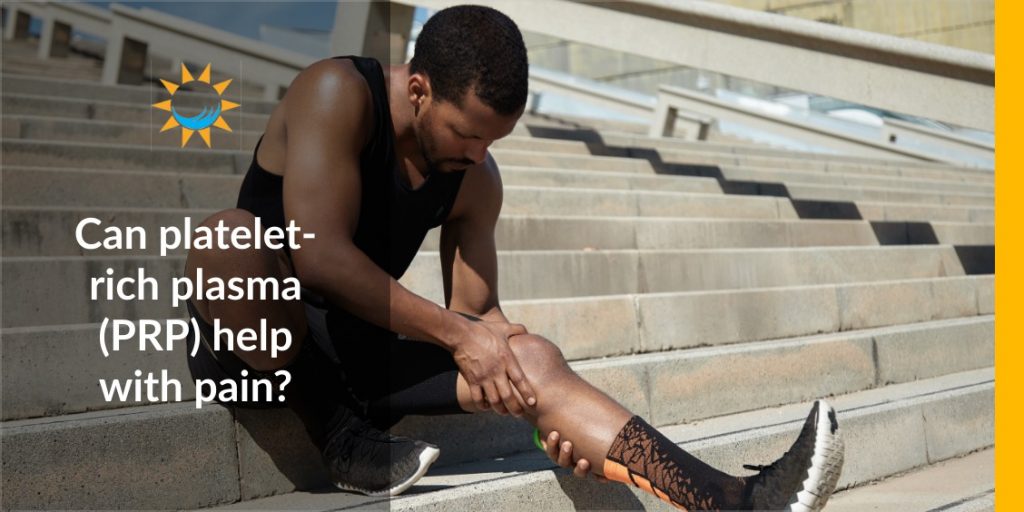Can platelet-rich plasma (PRP) help with pain?
Absolutely.
Your body is designed to heal itself. When you get sick, your immune system goes into defense mode to kill invading microbes. When you stop smoking, your lungs begin to repair themselves. If you get a cut, your blood clots in order to stop the bleeding. These are all processes that involve the body’s natural immunity and regeneration.
Platelet-rich plasma (PRP) injections attempt to utilize many of these same protective and regenerative pathways to help heal damaged tissue. This can in turn help with your pain.
Let’s break it down even further.
What is platelet-rich plasma (PRP)?
Your blood is mostly a liquid known as plasma. It is also made up of red blood cells, white blood cells, and platelets. Platelets are responsible for clotting blood, slowing, and eventually stopping bleeding. In addition to helping with clotting, platelets also stimulate growth factors that support regeneration or healing.
Platelet-rich plasma is just what the name suggests—plasma enriched with at least 5-10 times more platelets than what is normally present in the blood.
In order for platelet-rich plasma to help with pain, it is usually injected at the site of injury. To prepare PRP injections, a blood sample is taken from you and placed into a centrifuge. The centrifuge is used to concentrate the platelets and separate them from other blood cells. The concentrated platelets are then re-injected directly into the injured site or tissue, such as a tendon or knee. Oftentimes, we will use advanced imaging like ultrasound to guide the injection where it needs to go.
How does PRP work?
While we are not 100% certain how PRP exactly works, we are fairly certain that the increased concentration of platelets in the PRP help to stimulate growth factors. These growth factors then activate and accelerate the healing process. By injecting PRP into an area that is injured, we are counting on the body’s own growth factors to stimulate and regenerate damaged or lost tissue.
What exactly are PRP injections used for?
PRP therapy has been used to treat a variety of musculoskeletal conditions from chronic arthritis to ligament or tendon strains. If you’ve ever had an injury or debilitating condition then you know that it can certainly take a while to heal. PRP injections can help boost the healing process with less pain and with a quicker return to normal activities.
Do PRP injections work?
Research supports the use of PRP for sports-related injuries such as those that can occur to the tendons and ligaments. PRP may also help with arthritis but further research is needed to classify which types of arthritis PRP is most effective at treating. As with any newer treatments, further studies are still needed to help us better understand things like how much, how often, and at what concentration PRP injections are most effective for different musculoskeletal conditions.
What are the side effects of PRP injections?
When performed properly, PRP injections generally do not pose severe side effects. Because PRP injections are made from your own plasma, there is very minimal chance that you’ll have an allergic reaction. Like many injections, you may have a sore arm or bruise at the site of the injection. Also, like with any injection, there is always the risk of infection at the injection site.
PRP injections can certainly help with your pain and are relatively safe when done correctly. Make sure you consult with a physician who is knowledgeable in providing these injections to ensure that you get the best outcome.
Dr. Sergio Guiteau is a physician who has certifications in Aesthetic Medicine and is board certified in Family Practice and Sports Medicine. He specializes in Anti-Aging Medicine and blogs on Advancedrejuv.com/blog

